Pyroxenes (silicates): Spodumene
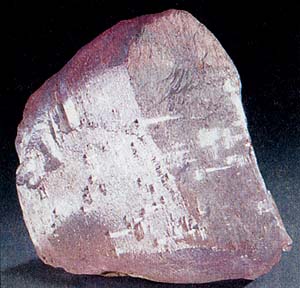 Diagnostic card.
Diagnostic card.
In the photo - a kind of spodumena - kunzite. Below: spodumen with Madagascar with obvious signs of corroding.
Li Al Si 2 O 6
Singonia monoclinic
Hardness 6,5-7
Specific weight 3-3.2
Cleavage is perfect
Crack irregular
Color is colorless, differently colored
Color in powder white
Glitter glass

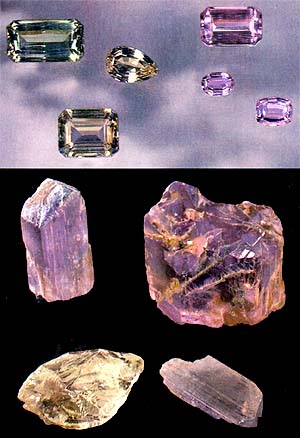 Its name spodumen probably leads from the characteristic gray color, since from the Greek it is translated as "burned to ash". Since 1879, two jewelry varieties of spodumene are known: giddenite and kunzite. In spodumena there are two varieties - kunzite and giddenite, having, respectively, pink and green color. The mineral is transparent or translucent, has a glassy luster. The hardness of the spodumene is quite high.
Its name spodumen probably leads from the characteristic gray color, since from the Greek it is translated as "burned to ash". Since 1879, two jewelry varieties of spodumene are known: giddenite and kunzite. In spodumena there are two varieties - kunzite and giddenite, having, respectively, pink and green color. The mineral is transparent or translucent, has a glassy luster. The hardness of the spodumene is quite high.
Spodumene forms prismatic crystals, sometimes of gigantic size. In parallel with the elongation, hatching is observed. Cleavage along the vertical prism. Columnar aggregates or dense microcrystalline masses are common. Color from grayish white to light gray and light yellow.
Chemical composition. Lithium oxide (Li2O) 8.1%, alumina (Al2O3) 27.4%, silica (SiO2) 64.5%. Cleavage. Perfect in (110) and noticeable in terms of (100). The shape of the crystals. Columnar, thick-plate, sometimes very large crystals. Simple ionic chains. Class of symmetry. Prismatic - 2 / m. Aggregates. Dense, lamellar, spar-like.
The name giddenit received the name of the American mineralogist WE Gydden, first discovered this precious stone in the pegmatites of North Carolina (USA). In Europe, it almost does not enter the market, but in America it is one of the favorite jewelry stones. Its coloration is not always stable.
Kunzite is named in honor of the prominent American gemologist JF Kunz, who first described this mineral in 1902. In light, the color of the kunzite fades. Often it forms large crystals. Cutting is hampered by perfect cleavage. Because of the strong pleochroism at the faceting, the table is oriented perpendicular to the main axis of the crystal. Heating can improve the coloring of brownish and greenish stones.
Diagnostic signs.
In the kunzite, the phenomenon of pleochroism can be clearly seen: when the crystal rotates, the characteristic pink color turns into a pale pink, and then into a light pink color. It swells and stains the flame red. Behavior in acids. Does not dissolve.
Gyddenite is easily confused with beryl, chrysoberyl, diopside. Euclase, pale emerald, green tourmaline. To confuse the kunzite is easy with pinkish-lilac minerals, especially with amethyst, beryl, topaz, and also with pink glass.
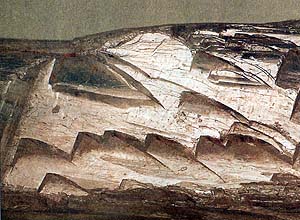 Origin.
Origin.
Spodumene occurs in lithium pegmatites along with quartz, lepidolite (lithium mica), beryl, tourmaline and garnets. Gyddenite forms in pegmatite veins. Its deposits are known in Brazil, Madagascar, the USA (North Carolina, California), Burma, Afghanistan. Kunzite deposits are known in the pegmatites of Madagascar, the USA (California, Maine), Brazil, Burma, Afghanistan.
Place of Birth.
Huge crystals were obtained from the USA (South Dakota), Canada (Manitoba province), Russia (Ural), Brazil, Mexico. In Italy, it is mined on the island of Elba. Kunzite comes from the USA, Afghanistan and Brazil. Gyddenite, except in Brazil, is noted in the state of North Carolina and in Madagascar.
Application.
If the spodumene forms large deposits, it is an important ore for lithium and its salts. Kunzite and giddenite are used in jewelry. Colorless, red, yellow, green. Beautifully colored differences (kunzite, giddenite) refer to precious stones. The perfect cleavage of the mineral makes it difficult to cut (it is very sensitive to pressure). The presence of pleochroism determines the location of the table when cut perpendicular to the main axis of the crystal.
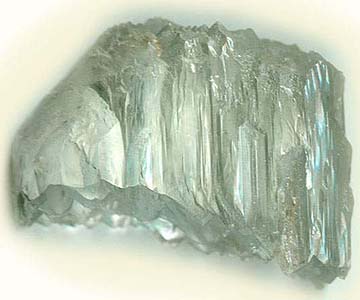
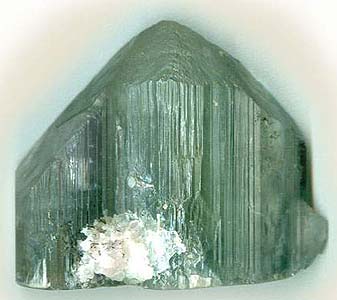
Gyddenite. Afghanistan. 4 cm (left) and 5 cm. Photo: © V.А. Sleetov.
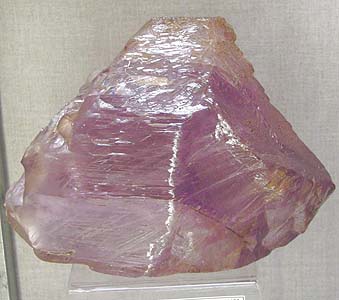
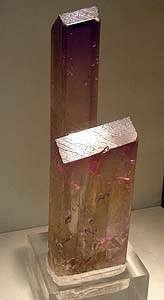
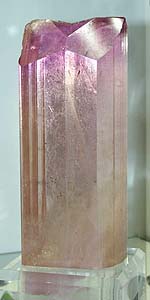
The cunite. Urupuka rn, Minas Gerais, Brazil. Kunzite (a cluster of crystals), prov. Lagman, Afghanistan. Munich show-2007.
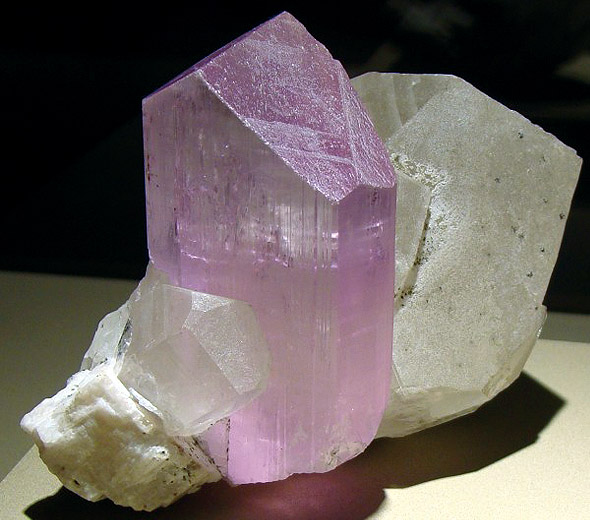
Crystal spodumena. Afghanistan. (2011).
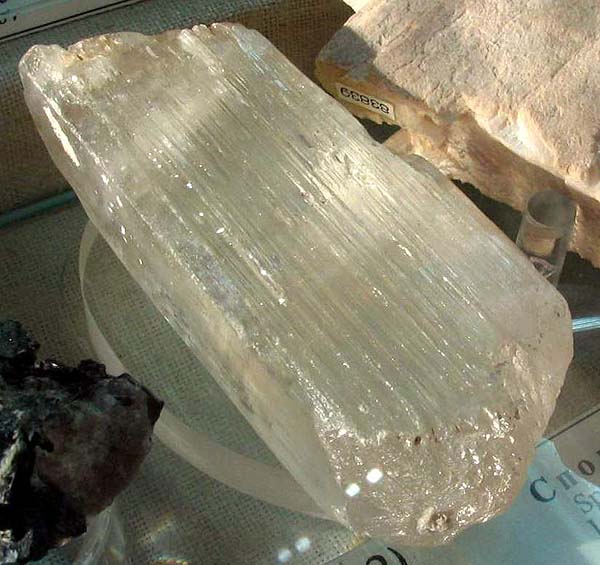
Spodumen. Nuristan, prov. Lagman, Afghanistan. Photo: © А.А. Evseev.
- Ghetchellit - "New Almaden blend" - arsenide and antimony sulfide (modern sulfosol)
- Antimony is a toxic metal (semimetal) , widely used in metallurgy, medicine and engineering
- Zirconium - a rare and undiscovered metal and the most dangerous precious stone in oxide and salt
- Gold - yellow dangerous and poisonous metal of modern accurate digital and cable technologies
- Sulfur is a golden-yellow toxic substance and a sign of active volcanic activity
- Cadmium is an undisputed toxic silvery metal unknown to a wide range of people
- Lead - a toxic gray imitator of metallic silver and toxic metal blende
- Arsenic is a classic poison of medieval and modern poisoners and medicine in medicine
Poisonous and radioactive dangerous stones and minerals
** - poisonous stones and minerals (mandatory check in the chemical laboratory + explicit indication of toxicity)
** - radioactive stones and minerals (mandatory check on the standard dosimeter + ban on open sales in case of radioactivity exceeding 24 milli / g / h + additional measures of population protection)
Catalog of minerals and semi-precious stones of the world by groups
** - poisonous stones and minerals
** - radioactive stones and minerals
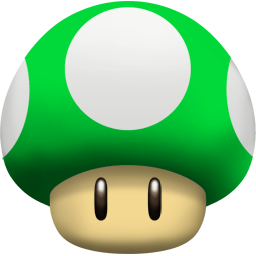

Comments
When commenting on, remember that the content and tone of your message can hurt the feelings of real people, show respect and tolerance to your interlocutors even if you do not share their opinion, your behavior in the conditions of freedom of expression and anonymity provided by the Internet, changes Not only virtual, but also the real world. All comments are hidden from the index, spam is controlled.